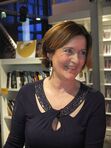Jane Lythell's Blog: https://janelythellamwriting.blogspot.com/, page 3
March 14, 2017
TV career of your dreams? Let the nightmare begin.
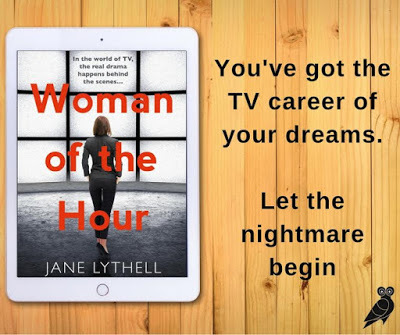
What happens at work has such an impact on our lives but there is very little fiction exploring this. Just this week MPs were debating the merits of a ban on requiring women to wear high heels at work. MPs said they were shocked at the stories about women’s dress codes, including the case of a woman who had been told to dye her hair blonde and a woman sent home from her temp job when she refused to wear high heels.
In Woman of the Hour I lift the lid on workplace abuse and intrigue in the glamorous, pressurised world of TV.
My heroine Liz Lyon is a respected TV producer and a guilty single mother. She works at StoryWorld TV which puts out a daily show. Liz has a power-crazed boss and spends her working days managing the huge egos of the on-screen talent. She has to walk on eggshells, bite her tongue and soothe frazzled members of staff while her programme budget is shrinking. She returns home to a stroppy teenage daughter, her beloved Flo, who Liz feels she is failing. It is hardly surprising that Liz dreads Monday mornings.
Does any of this sound familiar?
And on the subject of dress codes, one of the pundits at StoryWorld is sacked because she refuses to wear the pastel colours demanded by the station. She turns up for her slot in a black top and is summarily dismissed by the power-crazed boss.
As well as Liz’s story, I explore the working lives of two younger team members. Harriet Dodd is the daughter of a national newspaper editor who got her the job by pulling strings. Ziggy is a vulnerable intern who is on a one-year scheme to help young people in care build a career. The issues facing Harriet and Ziggy are different to those facing Liz. They are starting out on their working lives and their stress points are what they have to put up with to have a job in television. They are expected to work long hours for little money; accept being snarled at by celebrities and, far more seriously, they feel they cannot speak out about sexual harassment at work.
The drama of the workplace offers such a rich seam to mine. So many issues and moral dilemmas are thrown up by this aspect of our lives. There are power struggles, intrigue and betrayals as well as moments of camaraderie and satisfaction at a job well done.
I am working on a second book featuring Liz and the team at StoryWorld TV, which will be out in August 2017.
Woman of the Hour is published by Head of Zeus
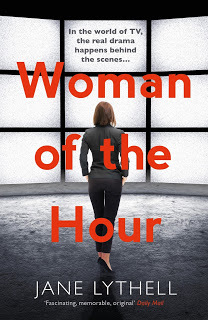
Published on March 14, 2017 10:03
February 18, 2017
Norwegian edition of AFTER THE STORM
I am delighted to reveal this gorgeous cover for the Norwegian edition of AFTER THE STORM.
This was published by Cappelen Damm on 27 March under their Dark Room imprint.
I think the use of colour and the stormy sea is perfect and the woman on the cover could well be Anna, who is one of the main characters.
In AFTER THE STORM four characters set sail from Belize City to an island in the Caribbean Sea and the storm is both a physical and a psychological one.
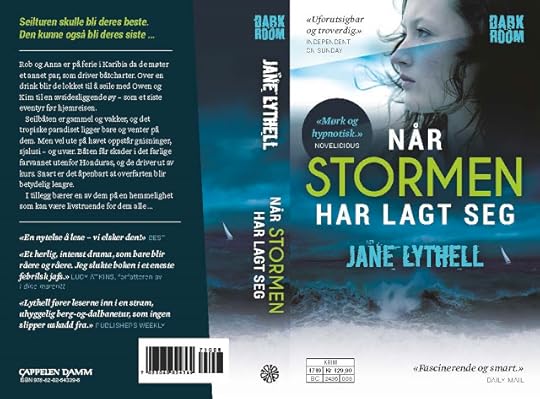
The UK version is available here: AFTER THE STORM
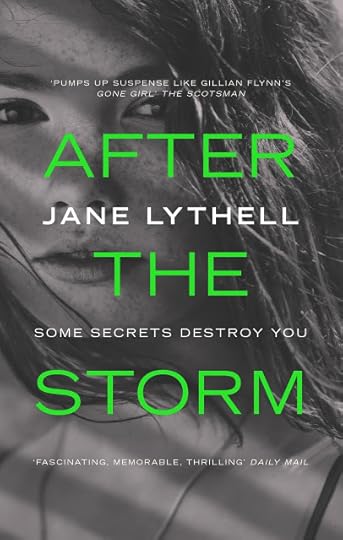
Published on February 18, 2017 07:32
Cover Reveal: Norwegian edition of AFTER THE STORM
I am delighted to reveal this gorgeous cover for the Norwegian edition of AFTER THE STORM.
This will be published by Cappelen Damm on 27 March under their Dark Room imprint. The use of colour and the stormy sea is perfect and the woman on the cover could well be Anna, who is one of the main characters.
In the novel the four characters set sail from Belize City to an island in the Caribbean Sea and the storm is both a physical and a psychological one.

The UK version, published by Head of Zeus, is available here: AFTER THE STORM

Published on February 18, 2017 07:32
January 8, 2017
Creating a vivid setting in your novel
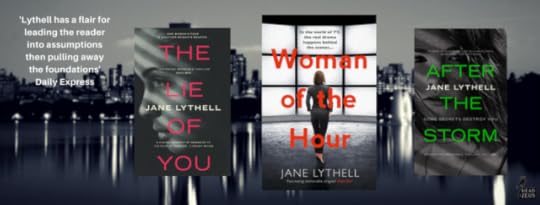
Setting is vitally important in a novel and I think about this a lot. It may be my background as a TV producer but I need to be able to see the spaces my characters will move through, both the look and the layout of a room or an office for example. Only then can I write scenes that feel real. Sometimes I even sketch the locations out roughly to help me get it right.
In my latest novel Woman of the Hour I have created two main locations: a TV station housed in a converted Victorian warehouse on the river by London Bridge and a flat in Chalk Farm where my leading character, Liz Lyon, lives with her daughter Flo. How did I set about creating a visual sense of these two places?
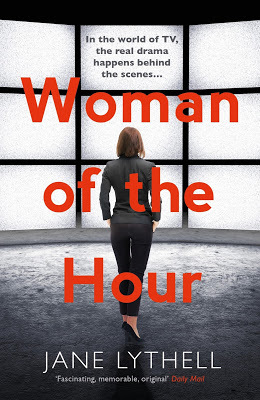
I wanted the TV station where Liz works to be a visually striking building. It is the cauldron where big egos clash and much of the drama unfolds.
‘I’ve worked here for years yet I still find that the building gives me a lift when I arrive in the mornings. The architect who converted it used its space to great effect and there’s this dramatic light-filled atrium which you enter from the street. Off the atrium are the main studio, the small news studio, dressing rooms and the Hub, our staff café. There are two staircases, on either side of the atrium, which take you up to the executive offices above; features is on the left and news is on the right. It is a very showbiz building.’
I included details like the fact that Fizzy the TV presenter demands a posy of fresh flowers on the set every day; she has a chaise longue in her dressing room; the staff café has lime-green and orange tables and chairs and trendy lighting and Julius Jones, the big boss, has the large corner office with the best views over the river and acres of polished oak floor. The reader needs to be able to see the building and believe that this is what a TV station is like; a glamorous building with an appearance designed to impress. TV is in the business of creating illusions and the impression it makes is more important than the reality.
In contrast Liz’s home is her personal space where you see the real, emotional Liz. You can reveal aspects of your character in their choice of home. After her divorce Liz is keen to have a nice home for her daughter so she takes on a mortgage that is too big for her. This means she can’t afford to leave her job even when the stress gets to her. Her flat is both a millstone around her neck and her haven:
‘There’s not much of a garden, it’s more a patio with potted plants, but there’s room enough for Flo and me to have two deckchairs out there in the summer and to pretend we have a garden. It’s not a big flat inside either. It does have one beautiful large room, the living room, which is also our kitchen and dining room. The doors at the far end open onto the patio and I bought the flat because of this room. It’s costing me more than I can comfortably afford and a great slab of my salary goes on my mortgage every month. But my flat is my haven.’ When Liz gets home from work she often cooks in order to decompress so I included scenes of her making macaroni cheese or flapjacks. I show her ironing. Her home environment is cosy with its squashy yellow sofa and the outdoor lights that twinkle along the garden wall. At the end of the book I included three of Liz's recipes which I called Comfort Recipes for the Stressed Out.
A novel set in a TV station and a London flat was not the easiest of settings to bring alive but it was important to try to do so. However with my second novel, After the Storm, I had a fantastic opportunity to create a vivid setting. The novel is about two couples who set off together in a sailing boat after knowing each other less than 24 hours to sail from Belize City in Central America to a paradise island in the Caribbean Sea called Roatan.
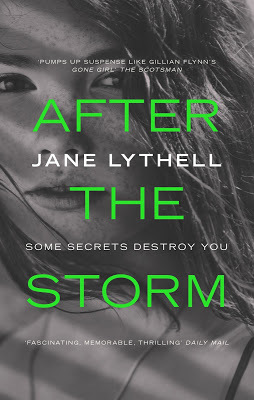
I had made that sail of 138 miles and I could not have written After the Storm without that first-hand experience. It was a stunning place and I kept a journal and took lots of photographs. My journal was full of descriptions of the food I ate, the birds on the island and the fish I saw when I went snorkelling. These details helped me create the visual setting and as a result conch stew, cooking live lobsters in a boat, houses on stilts and pelicans landing clumsily on a mangrove tree all make an appearance in the novel.
By creating a vivid setting you can establish mood and atmosphere, you can reveal characters and you can make the world of your novel feel very immediate. You know you’ve got it right when readers say things like ‘I felt I was there’ or ‘It felt so real.’
Woman of the Hour and After the Storm are published by Head of Zeus
This piece first appeared in Linda Hill's book blog Lindasbookbag
Published on January 08, 2017 04:12
November 4, 2016
Screen Adaptation Rights Bought to Lythell's Two Thrillers
I'm very happy to be sharing this press release from my publisher Head of Zeus.
Jane Lythell's third novel with Head of Zeus is published as a paperback today.
WOMAN OF THE HOUR takes the lid off the TV industry. Behind the glossy exterior of the on-air programme there lurks backstage intrigues, scandal and huge egos in conflict.
Jane, who worked as a TV producer and commissioning editor for fifteen years (as Jane Clarke), delivers a barnstorming insider's account of the private life of a TV station.
We are also delighted to announce that Pobbles Productions has optioned for screen adaptation Jane's two psychological thrillers THE LIE OF YOU and AFTER THE STORM. Pobbles Productions is backed by Great Point Media, the media investment and advisory business who have recently supported TV successes The Level, Doc Martin and Arthur and George.
THE LIE OF YOU is a portrait of obsession to the point of madness in which a woman tries to destroy her colleague.
AFTER THE STORM follows an English couple who get on a small boat with two American strangers to sail to an island after knowing them less than 24 hours and has been described as Marine Noir.
Jane Lythell said: ‘This is the best news. I have huge respect for the work of Great Point Media, am an avid fan of Doc Martin and have been gripped by The Level and its darkly atmospheric portrayal of Brighton where I live.’
Jim Reeve, Director of Great Point Media said: ‘We are very excited to be working with Pobbles and Jane on these projects which we feel will make fantastic adaptations to the screen.’
Laura Palmer, Fiction Publisher at Head of Zeus said: ‘Both these novels would make brilliant films, but I'm especially excited to see who would play the two rival women in The Lie of You. My fantasy pick would be Emily Blunt and Rosamund Pike.’AUTHOR Jane Lythell worked as a television producer at TV-am and British Satellite Broadcasting and commissioning editor for features at WestCountry TV before becoming Deputy Director of the BFI and Chief Executive of BAFTA.
For more information please contact Suzanne Sangster Suzanne@headofzeus.com or call 0207 553 7996
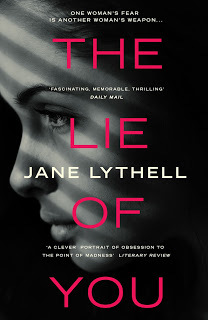
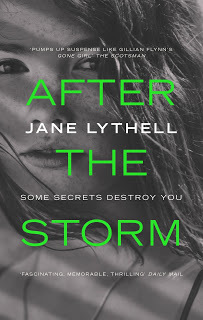
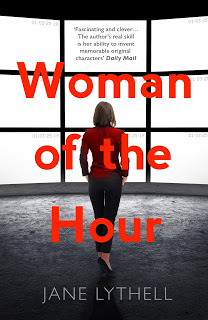
Published on November 04, 2016 03:43
October 7, 2016
That all important Point of View in novels
I think one of the most important questions a writer faces when starting a novel is to decide from whose point of view the story will be told. It comes down to choosing between first person and third person narration and there are advantages and difficulties with both approaches.With first person narration you get an intensity and an immediacy because you are in the head of your character and see through his or her eyes. You can express the emotions of the character directly. The downside is that you can’t see events where your protagonist is not present or know what other characters are doing when they are out of shot as it were. Whereas if you opt for third person narration you are like an eagle looking down on your characters as they go about their business. You are omniscient and have much greater freedom to describe events. But… there is less close up intensity and the voice is less personal.I have written three novels and wanted to explore how I approached this question of Point of View in each one. My first novel THE LIE OF YOU is about one very determined woman, Heja, who is trying to destroy another woman, Kathy, in both her professional and personal life. I wrote this in the first person but from the point of view of the two women characters. In alternating chapters you hear the voices of Heja and Kathy. My aim was to get into their heads and tell their story as truly as I could.
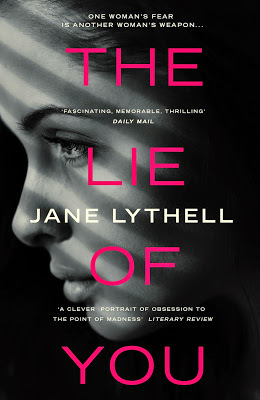
They are very different women. Kathy is smart but suffers from self-doubt about her ability to carry off her new job as Editor of a magazine. She likes food, cooking and sex, can be messy and needs warmth from her friends and lovers. Her tone of voice is warm and emotional. In contrast Heja is from Finland and she had been the face of Finnish TV News. She is beautiful, clever and cold and is always in control. We see her self-control in the way she wears her hair, in how she dresses and in her minimalist loft flat with its view of the Thames. And in her sentences too which are shorter and more staccato than Kathy’s. The advantage of telling the story from two first person points of view was that I was able to use the intensity of first person narration but because I switched between two characters I was also able to show different aspects of the unfolding drama.
My second novel AFTER THE STORM is about two couples who set off together in a 37 foot boat after knowing each other less than 24 hours to sail to a paradise island in the Caribbean Sea. But like most paradises it has a very dark side.
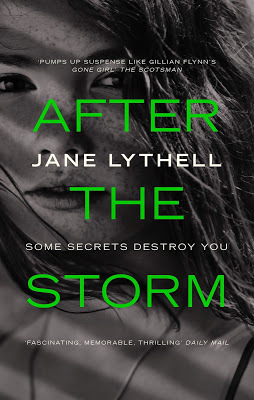
As I had four main characters and they were all important I decided I would have to tell the story in the third person, the eagle’s point of view. In order to make it more personal I would write individual scenes from the point of view of different characters. This is called Third Person Intimate I’m told. My task was to create four distinctive characters each with their own fears, desires and secrets to put in the exotic setting. Anna is an English speech therapist who is scared of much in the physical world but is brave about emotional crises. Her partner Rob has a strong Robinson Crusoe fantasy and would love to find his own personal wilderness. The American couple Owen and Kim are less straightforward and you sense they are escaping from something. There is a frisson of sexual attraction between the two couples and they all have secrets. It is when they reach the island that these secrets will emerge and challenge the four of them to the limit.Because I had chosen to write in the third person I had much greater freedom to describe the setting and the scenes. This meant I could roam wherever I needed to go, sometimes with just one of the characters. I was not tied to one controlling consciousness as you are in first person narration. I felt that there was less intensity of voice because of this. The book is a slow burner and it takes longer for you to get to know the characters because you are not seeing the world through their eyes all the time. However I felt it was the right choice for the story I wanted to tell.
In my latest novel WOMAN OFTHE HOUR I have returned to first person point of view. We see the drama unfolding through the eyes of my main character Liz Lyon. She is 41 years old and divorced with a fourteen year old daughter. She’s a respected but stressed-out TV producer and a guilty single mother.
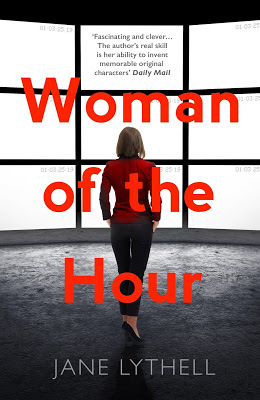
Many books depict women’s home and emotional lives. I’ve seen much less fiction about a woman struggling with the pressures of work and I wanted to explore that in this book. I wanted to show the whole woman: work-Liz, calm, controlled, soothing egos and managing a difficult boss and home-Liz who is far more emotional and reveals her real thoughts and feelings. So often at work Liz has to bite her tongue or censor what she says. It is what her job as Head of Features requires. At home Liz can let rip. And she fears that she is a better mother to her team than to her daughter Flo precisely because Flo presses her buttons.First person point of view allows you to show the gap between a person’s inner voice and their outer behaviour. Liz Lyon is someone who often can’t say what she means when she’s at work because she has to manage a lot of huge egos. WOMAN OF THE HOUR is also about power struggles at the workplace and in Liz Lyon I wanted to write a strong female character who also has her weaknesses and vulnerabilities.Looking back at my three novels I think the approach I am most comfortable with is first person point of view as I like to really feel my way into the experiences of my main character.
My novels are published by Head of Zeus.WOMAN OF THE HOUR
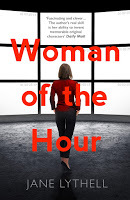
AFTER THE STORM
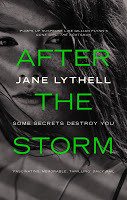
THE LIE OF YOU
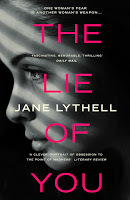
This piece first appeared on the Just Write website.
Published on October 07, 2016 02:28
August 28, 2016
Ten Books I Love
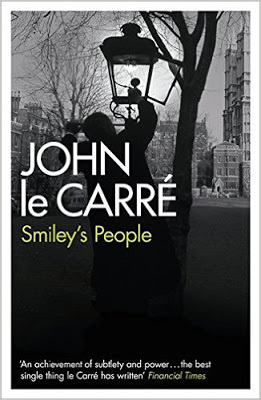
I’ve been a passionate reader all my life. As a child I read my favourite books again and again and knowing the plot did not spoil my pleasure at all. Here are two favourite books from childhood.
The Borrowers Mary NortonThis stimulated my imagination so much. I loved the idea of a little people borrowing, not stealing, the things they need. They had their own code of honour and were never wasteful. Their names: Arrietty, Homily and Pod Clock are inspired because they are just different enough to be non-human. It is a wistful book too because I seem to remember that the Borrowers had once been taller but got smaller and smaller because of their fear. Now that is a powerful idea.
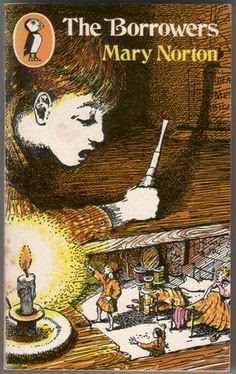
Anne of Green Gables series L.M. Montgomery I read the entire series of Anne books. She is such a spirited character and I relished how Anne sparred with Gilbert Blythe. This was the first love story I encountered in fiction and it followed the familiar pattern of initial antagonism blossoming into love. I remember so well the scene in the classroom where Gilbert picks up one of Anne’s plaits and declares:
"Carrots…""You mean, hateful boy!" she exclaimed passionately. "How dare you!"And then - thwack! Anne had brought her slate down on Gilbert's head and cracked it - slate not head - clear across.
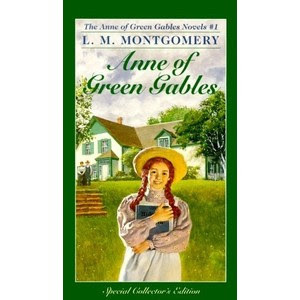
Gone with the Wind Margaret MitchellYour taste changes when you reach your teens and I read Gone with the Wind when I was 14 and I was consumed by all one thousand pages of it. I had borrowed it from Sheringham library and read it at every available opportunity. I remember vividly lying on my bed on my stomach as I read the last page where Rhett Butler leaves Scarlett O’Hara saying:
'My dear,I don't give a damn.'
I was devastated. I must have lain sobbing on my bed for an age until my mum came in and said:
'Oh well having a cry does you good.’
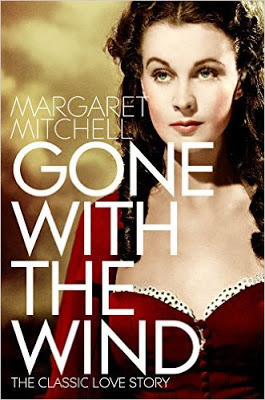
Charles DickensI had to include Charles Dickens because he has given me so much pleasure and so much to think about my entire life. I try to read or re-read a Dickens novel once a year and he continues to amaze and enthrall me. My all-time favourite is Great Expectations though I also adore Bleak House and David Copperfield. Dickens is the great storyteller and the great populariser. Who can ever forget Miss Havisham, Abel Magwitch, Lady Dedlock, the Artful Dodger, Ebenezer Scrooge, Uriah Heep and his hundreds of flawed and funny and poignant characters?
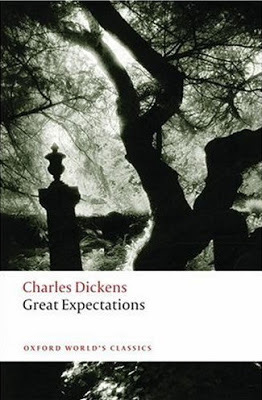
The Rime of the Ancient Mariner Samuel Taylor ColeridgeI studied English Literature at University College London and was introduced to the poetry of Coleridge. He remains one of my favourite poets and I must mention Frost at Midnight and The Pains of Sleep. However it is The Rime of the Ancient Mariner to which I return again and again for its powerful imagery and its moral message.
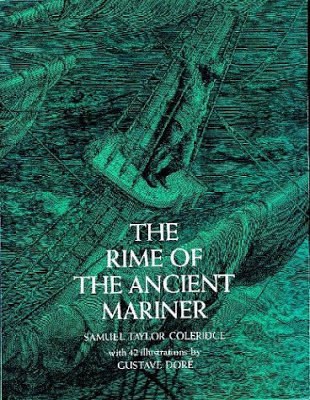
The Stand Stephen KingThis book grabbed me by the throat and thoroughly terrified me and I had to keep the light on all night after I had finished reading it! I think Stephen King should get far more praise for the master storyteller he is. He is something of a modern day Dickens in the way he creates so many memorable characters and such compelling storylines.
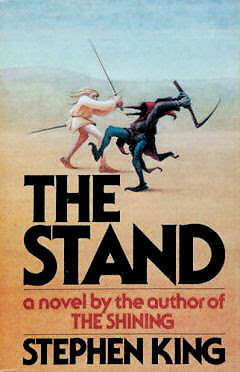
The Shipping News Annie Proulx This is my favourite contemporary novel and my respect for Annie Proulx as a writer is huge. The Shipping News has everything I love in a book: a despised and hapless hero in Quoyle; a wonderful sense of place in her depiction of Newfoundland, the land of Quoyle’s forefathers and a journey of redemption for Quoyle. I do not like hopeless books. I like there to be some light at the end.
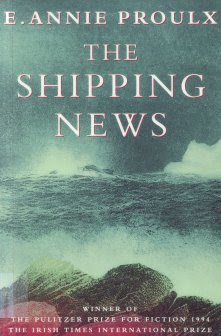
As a writer you go on learning all the time and the best way to learn about writing is to read long and deep. I came late to John le Carre and spent last summer reading his novels, eight of them, one after the other.
Tinker, Tailor, Soldier, Spy and Smiley's People John le CarreI enjoyed them all because le Carre is a brilliant writer. However the George Smiley trilogy blew me away. George Smiley in Tinker, Tailor, Soldier, Spy is a wonderfully achieved character: 'Small, podgy and at best middle-aged, he was by appearance one of London's meek who do not inherit the earth.'
Underneath that meek exterior is a brilliant mind and George Smiley sets out to unearth the mole at the heart of the UK’s secret services. The book kept me entranced.
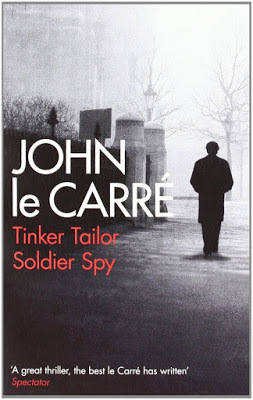
I was even more enthralled by the third book in the trilogy Smiley's People. This charts the culmination of Smiley's duel with Russian super spy Karla. It has an elegance and spareness about the writing and the plotting to which I can only say Bravo John le Carre.
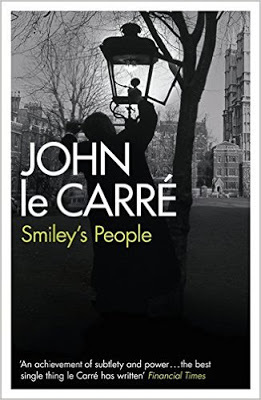
This Thing of Darkness Harry ThompsonThis is a majestic doorstep of a book that vividly brings to life Robert FitzRoy the Captain of the Beagle and his five year voyage with Charles Darwin to Tierra del Fuego, the Galapagos and beyond. The two men became close during the voyage but differences in their beliefs later started as a crack and widened to a chasm. There are some marvellous discussions between the two men on whether the Biblical Flood ever happened and whether species can transmute. The book has two descriptions of sea storms that left me in awe of Thompson's writing. It is his only novel as Harry Thompson died shortly after completing it. Do try to read it.
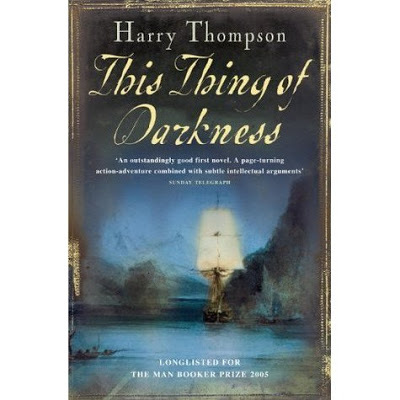
There is a strong theme of the sea and sailing with my selection: The Ancient Mariner, The Shipping Newsand This Thing of Darkness and of course I wrote my own sailing book set on an old wooden sailing boat in the Caribbean Sea: After The Storm.
My three novels are published by Head of Zeus.
WOMAN OF THE HOUR

AFTER THE STORM
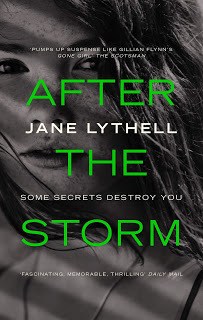
THE LIE OF YOU

This first appeared in Anne Cater's excellent blog: Random Things through my Letterbox.
Published on August 28, 2016 02:15
Nine favourite books
I’ve been a passionate reader all my life. As a child I would read my favourite books again and again and knowing the plot did not spoil my pleasure at all. Here are two favourite books from childhood.
The Borrowers Mary NortonThis stimulated my imagination so much. I loved the idea of a little people borrowing, not stealing, the things they need. They had their own code of honour and were never wasteful. Their names: Arrietty, Homily and Pod Clock are inspired because they are just that bit different and non-human. It's a wistful book too because I seem to remember that the Borrowers had once been taller but got smaller and smaller because of their fear. Now that is a powerful idea.

Anne of Green Gables series L.M. Montgomery I read the entire series of Anne books. She is such a spirited character. I loved how she sparred with Gilbert Blythe. This was the first love story I encountered in fiction and it followed the familiar pattern of initial antagonism blossoming into love. I remember so well the scene in the classroom where Gilbert picks up one of Anne’s plaits and declares: "Carrots…""You mean, hateful boy!" she exclaimed passionately. "How dare you!"And then - thwack! Anne had brought her slate down on Gilbert's head and cracked it - slate not head - clear across.
Gone with the Wind Margaret MitchellYour taste changes when you reach your teens and I read Gone with the Wind when I was 14 and was consumed by all one thousand pages of it. I had borrowed it from Sheringham library and read it at every available opportunity. I remember vividly lying on my bed on my stomach as I read the last pages and Rhett Butler leaves Scarlett O’Hara. I was devastated. I must have lain sobbing on my bed for an age until my mum came in and said:
'Oh well having a cry does you good.’

Charles DickensI had to include Charles Dickens because he has given me so much pleasure and so much to think about my entire life. I try to read or re-read a Dickens novel once a year and he continues to amaze and enthral me. My all-time favourite is Great Expectations though I also adore Bleak House and David Copperfield. Dickens is the great storyteller and the great populariser. Who can ever forget Miss Havisham, Abel Magwitch, Lady Dedlock, the Artful Dodger, Ebenezer Scrooge, Uriah Heep and his hundreds of flawed and funny and poignant characters?

The Rime of the Ancient Mariner Samuel Taylor ColeridgeI studied English Literature at University College London and was introduced to the poetry of Coleridge. He remains one of my favourite poets and I must mention Frost at Midnight and The Pains of Sleep. However it is The Rime of the Ancient Mariner to which I return again and again for its powerful imagery and its moral message.
The Stand Stephen KingThis book terrified me and I had to keep the light on all night while reading it! I think Stephen King should get far more praise for the master storyteller he is. I think he is something of a modern day Dickens in the way he creates strong memorable characters and compelling storylines.
The Shipping News Annie Proulx This is my favourite contemporary novel and my respect for Annie Proulx as a writer is huge. The Shipping News has everything I love in a book: a despised and hapless hero; a wonderful sense of place in the depiction of Newfoundland, the land of Quoyle’s forefathers and a journey of redemption for Quoyle. I do not like hopeless books. I like there to be some light at the end.

Two recent reads that have wowed me. As a writer you go on learning all the time and the best way to learn about writing is to read long and deep.
Tinker, Tailor, Soldier, Spy John le CarreI came late to John le Carre and am spending the summer reading his novels. I have enjoyed the four others I have read so far but Tinker, Tailor, Soldier, Spy is the one that blew me away. George Smiley is a wonderfully achieved character: 'Small, podgy and at best middle-aged, he was by appearance one of London's meek who do not inherit the earth.'But George Smiley has a brilliant mind and he sets out to unearth the mole at the heart of the UK’s secret services. The book kept me entranced.
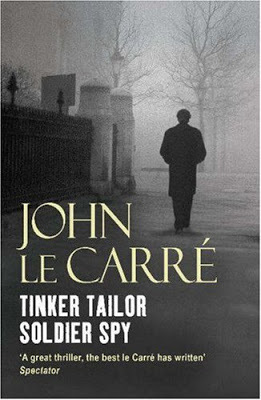
This Thing of Darkness Harry ThompsonThis is a majestic doorstep of a book that vividly brings to life Robert FitzRoy the Captain of the Beagle and his five year voyage with Charles Darwin to Tierra del Fuego, the Galapagos and beyond. The two men became close during the voyage but differences in their beliefs later started as a crack and widened to a chasm. There are some marvellous discussions between the two men on whether the Biblical Flood ever happened and whether species can transmute. The book has two descriptions of sea storms that left me in awe of Thompson's writing.
I have just noticed that there is a strong sea and sailing theme with my selection: The Ancient Mariner, The Shipping Newsand This Thing of Darkness and of course I wrote my own sailing book set on a boat in the Caribbean Sea: After the Storm.
This first appeared in Anne Cater's excellent blog: Random Things through my Letterbox.
WOMAN OF THE HOUR was published on 14 July 2016 as a hardback and an e-book.
 e-book cover
e-book cover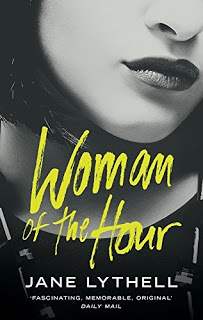 hardback cover
hardback coverAFTER THE STORM

THE LIE OF YOU

Published on August 28, 2016 02:15
July 20, 2016
Why I wanted to write about women at work
On the dust-jacket of my new novel WOMAN OF THE HOUR, it says:
Meet Liz Lyon: Respected TV Producer, Stressed-out Executive, Guilty Single Mother… Woman of the Hour. This sums up the dilemma of my leading character Liz Lyon very well. I was keen that in this, my third novel, I would put the focus on women in the workplace.
I worked in television for 15 years first at TV-am and later at WestCountry TV and my work was mainly in the area of features and live TV. On Good Morning Britain I was one of the people who booked the guests for Anne Diamond and Nick Owen to interview and I would write the research briefs for them. I got to meet some fantastic people and some rather less pleasant celebrities but it was heady stuff. Television is a seductive industry. You feel you are at the centre of things because you hear news events before most people. You also get to meet some movers and shakers and it is difficult to give this up.
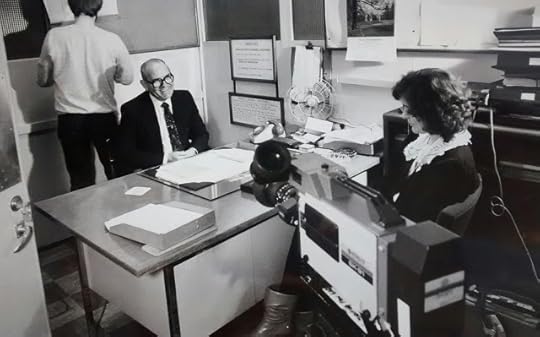 Here I am conducting an interview for TV-am
Here I am conducting an interview for TV-amBut… , and this is what happened to me, it can be a burn-out industry. You are expected to work until the show is ready. The hours are never nine to five or even predictable and this made it difficult for me as a lone parent. I left my career in television when my daughter Amelia was nine.
Most of us spend so much time at work but I haven’t seen much fiction in this area. Many books depict women as mothers, lovers, daughters and sisters, with the focus on the stresses and strains of our home and our emotional lives. I’ve seen much less fiction about a woman struggling with the pressures of work. Yet that had been my life. A working mother, trying to keep all the balls up in the air, feeling conflicted about competing pressures. I wanted to explore that.
My heroine Liz Lyon is 41 years old and divorced. Her daughter Flo is 14. Liz took on a big mortgage so that she and Flo could have a decent home. She is stressed but she needs the good pay she gets at the TV station:‘Most of the time I feel lucky to have my job but it is at moments like this when I think about leaving the station. I’m on a good salary and I need it to pay my huge mortgage. Goldenhandcuffs, it’s called, being paid so much money that you feel you can’t leave your job.’
I also wanted to write a strong female character who has her weaknesses and vulnerabilities. Liz Lyon is someone who often can’t say what she means because she has to manage and soothe huge egos at work. Her inner voice is different from her outer behaviour.
A television station can have a feverish atmosphere and even more so when the shows are live. Live TV is more dangerous than pre-recorded TV because things can go wrong. When it does go wrong the presenters have to cope under pressure, there’s a surge of adrenalin and feelings can run high. I try to capture this in a number of scenes in WOMAN OF THE HOUR from the moment when a guest won’t come out of Make-Up because her hair looks awful to the scene where a prominent politician tears off his mic and storms out of the TV station. Liz Lyon is left to pick up the pieces.
The novel is also about power struggles at the workplace. It’s about how you have to play by certain rules and how sometimes in order to survive it’s not about doing the right thing, it’s about doing the smart thing.
WOMAN OF THE HOUR was published as a hardback and e-book by Head of Zeus 14 July 2016.
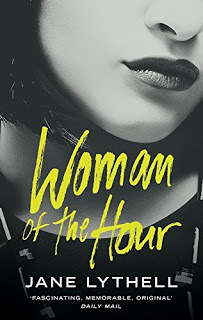
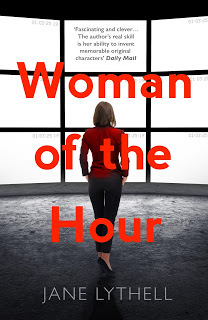
This piece first appeared on http://lauraslittlebookblog.blogspot....
Published on July 20, 2016 22:12
July 2, 2016
Head of Zeus acquires second book in StoryWorld Series
Laura Palmer, Editorial Director at Head of Zeus has bought World Rights (excluding Germany) for the second book in Jane Lythell’s StoryWorld series, from Gaia Banks at Sheil Land.
StoryWorld tells the story of respected TV producer, Liz Lyon who works on a daytime TV show. Author Jane Lythell worked as a television producer and commissioning editor for fifteen years.
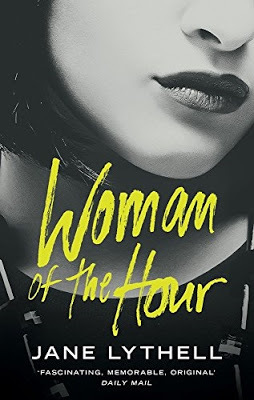 Hardback coverJane Lythell said: ‘I worked in TV for 15 years and wanted to write about women at work. I’ve seen a lot of novels about women’s home and emotional lives but much less about women struggling with the pressures of work. Yet that had been my life. A working mother, trying to keep all the balls up in the air, feeling conflicted about competing pressures. I was delighted when Head of Zeus commissioned WOMAN OF THE HOUR and am even more thrilled today as we sign the contract on the second book in the StoryWorld series. This tells the story of Liz Lyon, a respected TV producer, a stressed-out executive and a guilty single mother.’
Hardback coverJane Lythell said: ‘I worked in TV for 15 years and wanted to write about women at work. I’ve seen a lot of novels about women’s home and emotional lives but much less about women struggling with the pressures of work. Yet that had been my life. A working mother, trying to keep all the balls up in the air, feeling conflicted about competing pressures. I was delighted when Head of Zeus commissioned WOMAN OF THE HOUR and am even more thrilled today as we sign the contract on the second book in the StoryWorld series. This tells the story of Liz Lyon, a respected TV producer, a stressed-out executive and a guilty single mother.’Laura Palmer said ‘Jane Lythell is brilliant at lifting the lid on the world of TV, full of monster egos and high drama. I'm thrilled to be continuing the StoryWorld series with another slice of smart women's fiction from this talented author.’
The first book in the StoryWorld Series, WOMAN OF THE HOUR, will be published in hardback and ebook on 14th July.
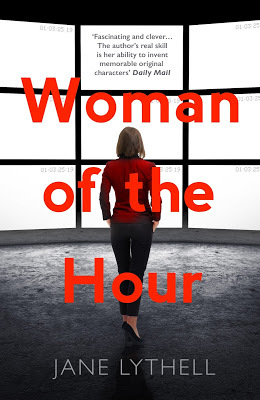 E-book and paperback cover
E-book and paperback coverThe e-book is available here
Published on July 02, 2016 00:00

